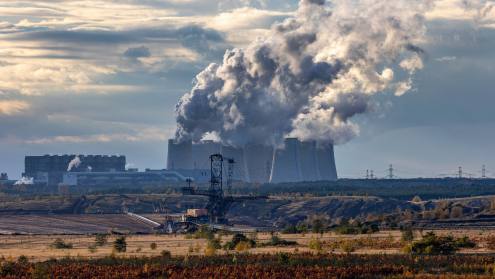In recent years, the attention paid to environmental, social and governance (ESG) and sustainable investment by companies and the media has dramatically increased. The G20, the OECD, the European Commission and many others are working on sustainable finance recommendations and regulation.
Today, 80% of the 100 largest firms in 52 countries have adopted Global Reporting Initiative sustainability disclosure standards. In turn, there has been a massive inflow of funds to this type of investment, which has been accelerated even further by the Covid-19 pandemic. Green investment is in vogue.
Surely this is a good thing: given that the main goal of climate and sustainable finance is the reduction of greenhouse gas emissions, you’d have thought this investment would be tackling the issue. Yet, at the same time, carbon dioxide emissions have risen by around 40% over the past 20 years. It makes one wonder whether these initiatives are even working.
Once you scratch below the surface, it becomes apparent that the link between good intentions of investors and additional carbon dioxide reduction of companies is broken, if it ever worked.
Greenwashing
Let’s take the average retail investors who fill green investment and pension funds with their money. Research has shown that investors do not care much about the effectiveness of their investments in terms of greenishness, nor about the efficacy in terms of actual change at the company level. Fittingly, ESG rating agencies and large investors focus to a large extent on transparency, decision rules and plans, instead of impact. Receiving a ‘warm glow’ from the investment is enough, it seems.
Financial intermediaries like to emphasise the green in marketing, but less so in what they are doing. The risk most fiercely debated in the finance community is not a warming planet, but potentially upcoming regulation (the so-called ‘transition risk’). Often, the promotion of ESG investments is driven by higher fees for fund managers, accountants, data providers, rating agencies and investment bankers. Greenwashing standard products is lucrative and — in the absence of a common standard and the presence of only mildly interested investors — popular.
Nobody has an answer to this and few people care
Indeed, actual changes in the real world driven by capital market activity are rather minuscule. Slightly higher capital costs for brown firms do not translate into meaningful price changes or a different behaviour and often meet a demand with low elasticity. The so-called ‘stranded assets’ are still owned and operated by profit-seeking investors.
Most green investments would have been done anyway because they simply pay off; conventional financing is just replaced by slightly cheaper green financing. While the individual financial products might be greenish, their impact in terms of actual carbon dioxide reduction, or similar good things for the environment, is close to zero.
Task of the century
We need to ask a simple, but sincere question: how much carbon dioxide emissions have been avoided because of the sustainable capital markets?
Nobody has an answer to this and few people care.
Investors feel good, ESG rating agencies come into being and flourish; accountants, commercial and investment banks and asset managers prosper, and companies get a better image by issuing ‘green bonds’. On top of this, regulators are busy; politicians can showcase action and change; and business schools are offering green investment classes, heart-warming case studies and a good conscience.
Everybody is happy. Green finance does not hurt.
Only one thing is decidedly unimpressed: the Earth’s temperature. It will keep on rising.
We need to get serious. Stricter real-world regulation about carbon dioxide and other emissions is needed, as even completely green capital markets will not save the planet. We should not let the sustainable marketing distract us from our task of the century.
Banks and their clients need to understand that, so far, sustainable finance is geared towards the sustainability of the financial system, not the Earth. While this is needed — we do not want the financial system’s fragility to block future regulation of carbon dioxide emissions — it will change. In the future, green finance will focus exclusively on firms’ actions that make our economy greener. Bankers might consider getting ahead of the curve.
Michael H Grote is professor of corporate finance at Frankfurt School of Finance and Management. This opinion piece is based on the paper: The role of capital markets in saving the planet and changing capitalism - just kidding.







